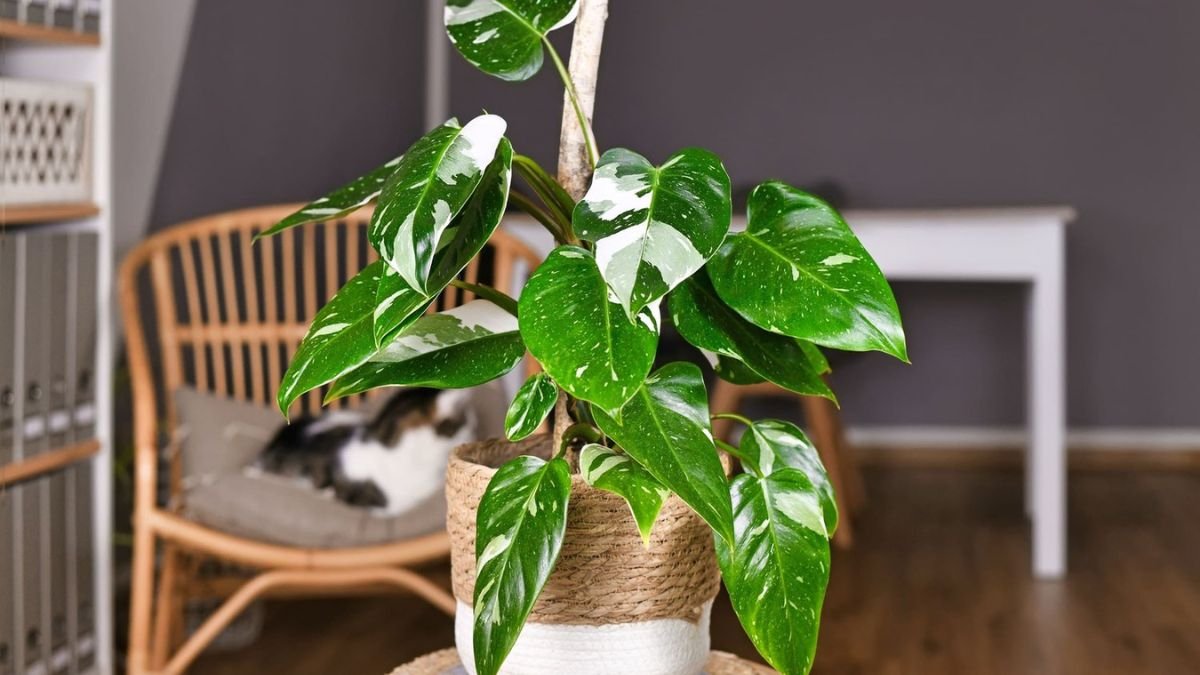Introduction
The White Princess Philodendron is a stunning and highly sought-after houseplant known for its elegant foliage and easy-care nature. Belonging to the Philodendron genus, this rare hybrid variety features lush green leaves splashed with striking white variegation. It is an excellent choice for plant enthusiasts looking to add an exotic touch to their indoor plant collection.
In this article, we will explore everything about the White Princess Philodendron, including its origin, care requirements, propagation methods, common issues, and benefits.
Overview Table
| Feature | Description |
|---|---|
| Scientific Name | Philodendron ‘White Princess’ |
| Common Name | White Princess Philodendron |
| Family | Araceae |
| Origin | Hybrid (exact origin unknown) |
| Growth Habit | Compact, upright |
| Leaf Color | Green with white variegation |
| Light Requirement | Bright, indirect light |
| Watering Frequency | When the top 2 inches of soil are dry |
| Soil Type | Well-draining, rich organic mix |
| Temperature Range | 18-27°C (65-80°F) |
| Humidity Requirement | 60-80% |
| Toxicity | Toxic to pets and humans |
| Propagation Methods | Stem cuttings, air layering |
| Common Pests | Mealybugs, spider mites, aphids |
| Common Diseases | Root rot, fungal infections |
Origin and Background
The White Princess Philodendron is a hybrid variety, believed to have been selectively bred for its distinctive variegation. Unlike other Philodendrons that climb or trail, this plant has a more upright growth pattern, making it a favorite for interior decorators and collectors alike.
Care Requirements
Proper care is essential for maintaining the health and beauty of your White Princess Philodendron. Below, we discuss its care needs in detail.
1. Light
This plant thrives in bright, indirect light. Direct sunlight can scorch the leaves, while too little light may reduce variegation and slow growth. A north or east-facing window is ideal.
2. Watering
The White Princess prefers slightly moist soil but is sensitive to overwatering. Water when the top 2 inches of soil feel dry. Ensure proper drainage to prevent root rot.
3. Soil
A well-draining, organic-rich soil mix is best. A recommended mix includes:
- 40% peat moss
- 30% perlite
- 20% orchid bark
- 10% compost
4. Temperature
Maintain a warm temperature range between 18-27°C (65-80°F). Avoid placing the plant in areas with cold drafts or sudden temperature fluctuations.
5. Humidity
High humidity (60-80%) is crucial for optimal growth. If indoor humidity is low, use a humidifier, pebble tray, or mist the leaves occasionally.
6. Fertilization
Use a balanced liquid fertilizer (20-20-20) every 4-6 weeks during the growing season (spring and summer). Reduce feeding in fall and winter.
Propagation Methods
There are two primary ways to propagate a White Princess Philodendron:
1. Stem Cuttings
- Select a healthy stem with at least one node and a leaf.
- Cut just below the node using sterilized shears.
- Place the cutting in water or a well-draining soil mix.
- Keep in a warm, humid environment until roots develop.
2. Air Layering
- Choose a healthy stem and create a small incision.
- Wrap damp sphagnum moss around the incision.
- Cover with plastic wrap and secure with ties.
- Once roots appear, cut and pot the new plant.
Common Problems and Solutions
Despite being relatively easy to care for, the White Princess Philodendron can encounter some issues. Below are common problems and their solutions.
1. Yellowing Leaves
- Cause: Overwatering or poor drainage.
- Solution: Allow soil to dry between watering and use well-draining soil.
2. Browning Leaf Tips
- Cause: Low humidity or excessive direct sunlight.
- Solution: Increase humidity and relocate the plant to indirect light.
3. Pests
- Common Pests: Mealybugs, spider mites, aphids.
- Solution: Use neem oil or insecticidal soap to treat infestations.
4. Root Rot
- Cause: Overwatering and poor drainage.
- Solution: Trim affected roots and repot in fresh, dry soil.
Benefits of White Princess Philodendron
1. Aesthetic Appeal
The plant’s elegant white-green foliage adds a sophisticated touch to any space, making it a popular choice for home and office decor.
2. Air Purification
Like other Philodendrons, the White Princess helps improve indoor air quality by filtering toxins such as formaldehyde and benzene.
3. Low Maintenance
With proper care, this plant thrives without requiring constant attention, making it suitable for both beginners and experienced plant lovers.
Conclusion
The White Princess Philodendron is an exquisite and rewarding houseplant that brings elegance and freshness to any indoor space. With proper care, including adequate light, watering, humidity, and occasional feeding, this plant will thrive and maintain its stunning variegation.
Whether you are a seasoned plant collector or a beginner, the White Princess Philodendron is a worthy addition to your indoor garden. By following the guidelines provided in this article, you can enjoy the beauty of this extraordinary plant for years to come.











